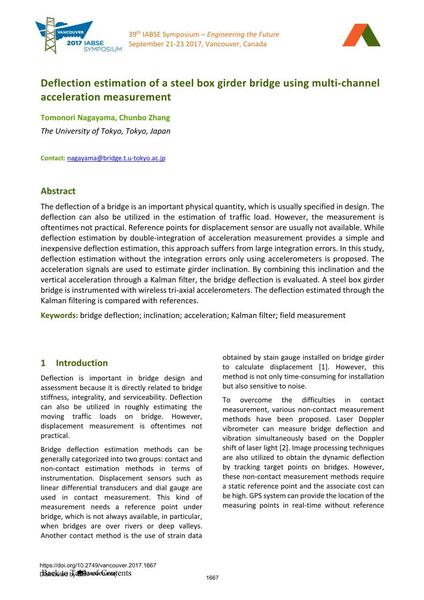Deflection estimation of a steel box girder bridge using multi-channel acceleration measurement

|
|
|||||||||||
Détails bibliographiques
| Auteur(s): |
Tomonori Nagayama
(The University of Tokyo, Tokyo, Japan)
Chunbo Zhang (The University of Tokyo, Tokyo, Japan) |
||||
|---|---|---|---|---|---|
| Médium: | papier de conférence | ||||
| Langue(s): | anglais | ||||
| Conférence: | IABSE Symposium: Engineering the Future, Vancouver, Canada, 21-23 September 2017 | ||||
| Publié dans: | IABSE Symposium Vancouver 2017 | ||||
|
|||||
| Page(s): | 1667-1674 | ||||
| Nombre total de pages (du PDF): | 8 | ||||
| Année: | 2017 | ||||
| DOI: | 10.2749/vancouver.2017.1667 | ||||
| Abstrait: |
The deflection of a bridge is an important physical quantity, which is usually specified in design. The deflection can also be utilized in the estimation of traffic load. However, the measurement is oftentimes not practical. Reference points for displacement sensor are usually not available. While deflection estimation by double‐integration of acceleration measurement provides a simple and inexpensive deflection estimation, this approach suffers from large integration errors. In this study, deflection estimation without the integration errors only using accelerometers is proposed. The acceleration signals are used to estimate girder inclination. By combining this inclination and the vertical acceleration through a Kalman filter, the bridge deflection is evaluated. A steel box girder bridge is instrumented with wireless tri‐axial accelerometers. The deflection estimated through the Kalman filtering is compared with references. |
||||


